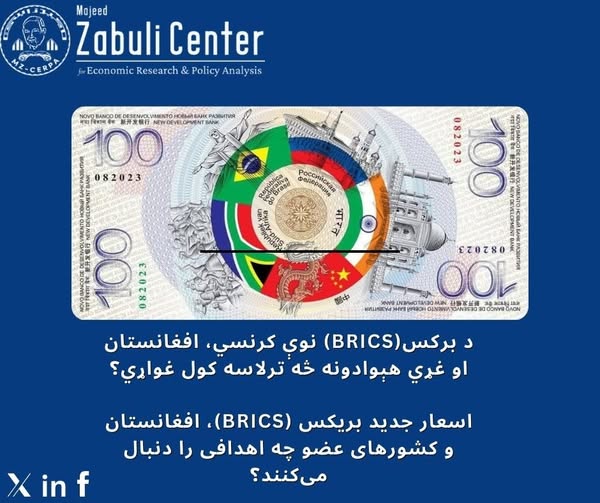23 Aug,25
Most Searched Keywords
04 Aug
New BRICS Currency; What It Means for Afghanistan and Member States

In an era where economic interdependence defines global relationships, the dominance of the US dollar in international trade has become a double-edged sword. While the dollar offers stability, liquidity, and ease in global transactions, this reliance also exposes countries to vulnerabilities such as high transaction costs, currency conversion challenges, and the effects of US monetary policy on their economies.
In response, BRICS nations Brazil, Russia, India, China, and South Africa have proposed the creation of a new joint currency aimed at reducing their dependence on the dollar. But this is more than just a financial strategy; it signals a major shift in global trade dynamics.
The proposed BRICS currency would allow member countries to trade directly with one another using a common currency. For instance, Brazil could export soybeans to India without converting its currency into dollars. This would streamline transactions, reduce costs, and make trade more efficient.
This idea aligns with the theory of comparative advantage, a key principle in international trade, which suggests that countries benefit most when they focus on producing goods they can make more efficiently. In this context, using a common currency allows countries to leverage their strengths without the added burden of exchange rate fluctuations. For example, Brazil, known for coffee production, and India, strong in textiles, could trade directly using the BRICS currency avoiding the inefficiencies caused by converting between Brazilian reais and Indian rupees.
By removing the need for such conversions, this system could stabilize prices and reduce transaction fees. Without the unpredictable impact of the dollar on global markets, BRICS members would benefit from more predictable pricing and a more stable trade environment. It would also give BRICS nations more leverage in trade negotiations and encourage deeper cooperation based on mutual strengths and advantages.
For a country like Afghanistan, the implications could be significant. Rich in natural resources and agricultural potential, Afghanistan could benefit from broader trade access to BRICS markets. However, major challenges remain. Ongoing international sanctions and political instability continue to hinder trade efforts and limit the country's ability to fully benefit from a new BRICS currency. Real progress would depend on Afghanistan’s ability to stabilize politically and rebuild its economy.
While the BRICS currency offers a theoretical framework for opportunity, Afghanistan’s reality means any progress will likely be slow and difficult.
Still, the potential benefits for BRICS countries are compelling. A shared currency could drastically lower transaction costs and eliminate the need for constant currency exchanges, leading to lower prices for consumers and higher profit margins for businesses. It would also grant BRICS members greater independence from the dollar, enabling them to shape their own trade and economic policies without US influence.
Ultimately, such a currency could deepen economic cooperation among BRICS members, fostering more trade, mutual support, and shared growth. However, major questions remain about how the currency would be structured, governed, and valued. These complexities will require close coordination, and progress may be gradual.
In conclusion, the BRICS currency initiative is a bold attempt to reshape international trade dynamics. Whether these diverse countries can agree on a shared monetary framework and overcome political and economic hurdles remains to be seen. But one thing is certain: what begins as a financial initiative could have wide-reaching effects, offering both opportunities and challenges, particularly for countries like Afghanistan that are seeking economic stability amid adversity.
